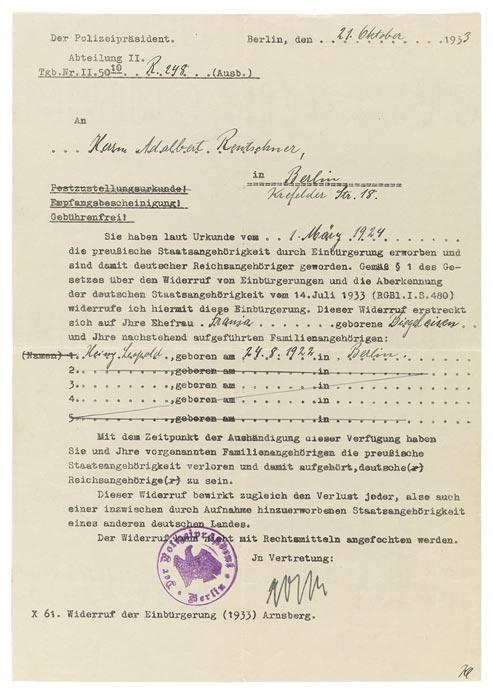The dilemma for stateless Jews after July 14, 1933
The Fremdpass of Anneliese Landau displayed on the previous post was the identification she had to carry after she was made stateless under the German Denaturalization and Expatriation Law of July 14, 1933.
This law specifically applied to naturalized German Jews who obtained their citizenship during the post-WWI period, fulfilling a long-time Nazi plan to banish Östjuden. It affected many families like the Landaus who originated in Austria and had been in Germany for years but had not obtained citizenship until the 1920s.
By contrast, our Austrian Jewish grandfather Hermann Ringel had obtained his citizenship in 1904, and thus our mother and grandmother were not affected by the 1933 law. Ultimately, they would also be stripped of their German citizenship under a 1941 law that expatriated all Jewish refugees who were no longer residing in Germany.
Both laws were revoked in 1949 under Article 116 of Germany's Basic Law, which opened to door for Joanne and other family members to later obtain restored German citizenship.
Our Prussian family members, the Wohlgemuth/Paechter branch, would have been exempt if their connection was paternal. Thus Kurt Paechter conferred his birthright citizenship to his wife and children.
By contrast, Helga's citizenship rights were conferred by her father's naturatlzed citizenship status, not by her mother's birthright citizenship.
In any case, none of our family was in the class of "stateless" Jews in Germany who faced even more terrible trials during the 1930s.

